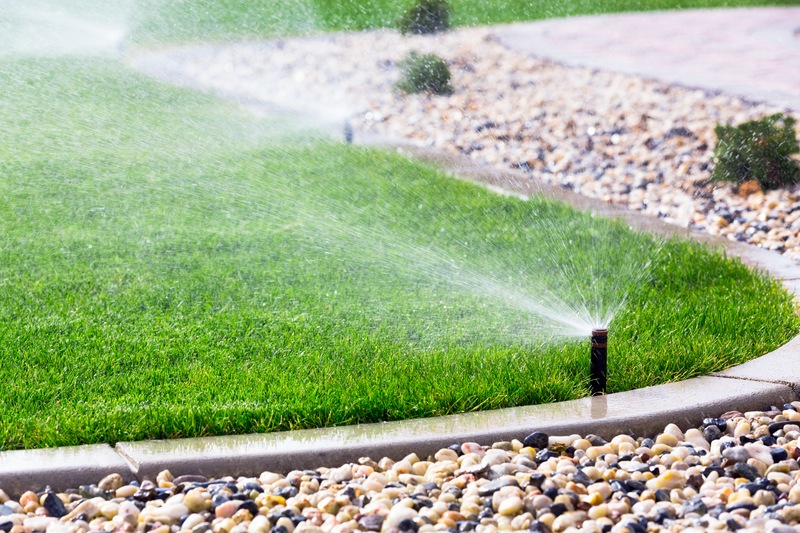Key Takeaways
- Artificial grass offers a sustainable and low-maintenance alternative for homeowners and businesses alike.
- Key benefits include water conservation, durability, and aesthetic appeal.
- Understanding the installation process and maintenance techniques is crucial for maximizing the lifespan and appearance of artificial grass.
In today’s evolving landscape of eco-friendly solutions, artificial grass has become a popular choice for homeowners and commercial entities. This trend is not simply a fad; instead, it is anchored in the tangible benefits that synthetic turf provides. Artificial grass products are appealing to individuals interested in upgrading their outdoor spaces. These solutions address aesthetic and practical concerns, offering lush, easy-care lawns that save time and money.
Adopting synthetic turf aligns with broader goals of sustainability and resource efficiency. Beyond the undeniable aesthetic advantages, artificial grass offers functional benefits such as significant water conservation and decreased need for pesticides and fertilizers. Let’s explore how synthetic grass transforms private residences and commercial landscapes by providing a sustainable, low-maintenance alternative that stands the test of time.
Introduction to Artificial Grass
Reflecting a growing demand for low-maintenance and aesthetically pleasing outdoor solutions, artificial grass products, once primarily found in sports venues, are now widely embraced in everyday landscaping. Synthetic grass, once predominantly used on sports fields and arenas, has significantly jumped into everyday landscaping. The shift from playing fields to patios has seen this product evolve in quality and application versatility. Initially developed to meet the needs of sports environments, artificial grass provides a seamless blend of durability and an evergreen aesthetic appeal that makes it irresistible to homeowners and facility managers. The advent of synthetic turf represents not just a stylistic choice but a movement toward minimizing maintenance efforts and conserving resources.
Benefits of Artificial Grass
Water Conservation
One of artificial grass’s top advantages is its contribution to water conservation—a critical factor in areas affected by water scarcity. According to a report from the Environmental Protection Agency, synthetic lawns can save thousands of gallons of water each year that would otherwise be used to maintain a natural lawn. This leads to lower utility bills and conserves a vital natural resource, making artificial grass a compelling option in drought-stricken regions.
Durability
Durability ranks high on the list of reasons to choose artificial turf. Unlike natural grass, which succumbs to heavy foot traffic and weather extremes, synthetic grass is engineered to withstand rigorous conditions. This aspect is particularly beneficial in high-traffic areas such as playgrounds and sports fields where wear and tear are unavoidable. The resilient materials utilized in manufacturing artificial turf resist tearing and fading, thus maintaining their vibrant green color and plush feel throughout the years.
Year-Round Aesthetics
Another compelling reason to switch to artificial grass is its ability to maintain aesthetic appeal year-round. The lush green appearance doesn’t diminish with changing seasons, contrasting with natural lawns that often suffer from brown patches and winter dormancy. Artificial grass remains stunning regardless of the weather or climate for homeowners and companies seeking to make a substantial, positive visual impact year-round.
Installation Process
Site Preparation
The foundation of a successful artificial grass installation begins with meticulous site preparation. This involves clearing the area of any existing vegetation and debris and ensuring a level surface. Proper groundwork is essential as it influences the final appearance and functionality of the turf and contributes to adequate drainage and stability. While this step may require some effort, it is crucial for ensuring the longevity and performance of the synthetic surface.
Laying and Securing the Turf
Once the site is prepped, the following steps involve laying the turf and securing it for a flawless finish. This process includes spreading the grass out evenly, trimming edges to fit the designated space, and fixing it using nails or adhesive solutions. Attention to detail during installation ensures that seams are inconspicuous, contributing to a natural look and feel. A correctly installed artificial lawn enhances the beauty and practicality of any outdoor area.
Maintenance Tips for Longevity
Cleaning and Care
Artificial grass is relatively low-maintenance, especially compared to natural lawns. Routine cleaning procedures, such as rinsing to remove dust and debris and brushing against the direction of the fibers, help retain their lush appearance. The ease of maintenance is a significant advantage for busy homeowners and businesses, allowing more time to enjoy the space without the constant headache of routine lawn care.
Dealing with Wear and Tear
Though durable, heavy foot traffic can eventually make some areas look more worn than others. A simple solution for rejuvenating these high-use zones is to add infill materials, which help maintain the grass’s original bounce and plushness. These maintenance strategies ensure longevity without extensive labor or the continuation of costly lawn treatments.
Creative Uses of Artificial Grass
Residential Applications
From traditional backyards to innovative interior designs, artificial grass is not limited to outdoor applications. Homeowners increasingly bring green into their interiors, using artificial grass to create unique aesthetic touches in sunrooms and creative workspaces. Outdoors and synthetic grass can enhance gardens, rooftop patios, and surrounding pool areas, making these spaces inviting and visually appealing with minimal ongoing effort.
Commercial Spaces
Artificial grass is essential in transforming urban spaces into environmentally friendly, visually appealing oases in commercial landscapes. Beyond aesthetics, businesses find that synthetic grass offers spaces where employees and clients can relax and engage. It is also used extensively in retail environments to create ambiance and captivate potential customers’ interest, proving its versatility beyond conventional applications.
Environmental Impact
Reduced Water Usage
The impact of artificial grass on water resources is profound. It negates the need for watering, which is especially important in places where water is scarce. This conservation effort supports broader environmental goals of reducing unnecessary water usage and promoting sustainability, establishing artificial grass as a credible option in eco-friendly landscaping.
Non-Toxic Materials
A modern concern with any manufactured product is its safety for humans and the environment. Thankfully, advancements in artificial turf production have focused on using non-toxic materials, ensuring that landscapes are safe for children and pets. The push towards sustainability continues to result in innovations within the field, further reinforcing artificial grass as a conscientiously crafted product.




